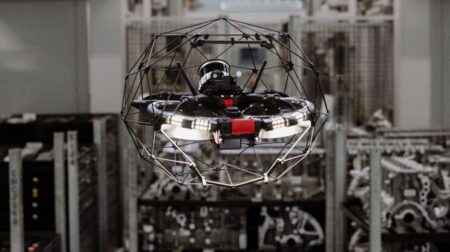Roboticists at the Jacobs School of Engineering at the University of California San Diego have 3D printed a robotic gripper that reportedly doesn’t need any electronics to work.
According to the team, no such gripper, which can be used as soon as it comes off the 3D printer with no electrical wiring, has existed before.
The gripper can pick up, hold and release objects, with the team designing a series of valves to enable this range of motions.
Fluidics, which usually refers to a device with no moving parts, was used to help the robot have a memory of when it has grasped an object. Then, when it detects the object pushing against its side, it releases it.
Due to the methods used during 3D-printing, many robots produced in this way are stiff to some degree and can contain leaks when they come off the printer.
This means further development and assembly after the initial printing process is needed to produce usable solutions.
However, researchers claim this gripper is usable straight away, and suited to industrial robotics arms, the handling of soft produce and other soft robotic applications.
What’s more, the device can reportedly work untethered, needing only a bottle of high-pressure gas as a power source.
A new 3D printing method helped the team create the hand, which involves the printer nozzle following a continuous route at every layer of printing.
By following the entire pattern of the object’s design, leaks and defects are less likely through this method, according to the lab, and allows for the printing of thin layers down to 0.5mm in thickness.
“It’s like drawing a picture without ever lifting the pencil off the page,” said Michael T. Tolley, senior author on the paper and an associate professor in the UC San Diego Jacobs School of Engineering.
The research was carried out in collaboration with support from the BASF corporation, which aims to support research and development (R&D) for agri-tech projects and sustainable farming.








